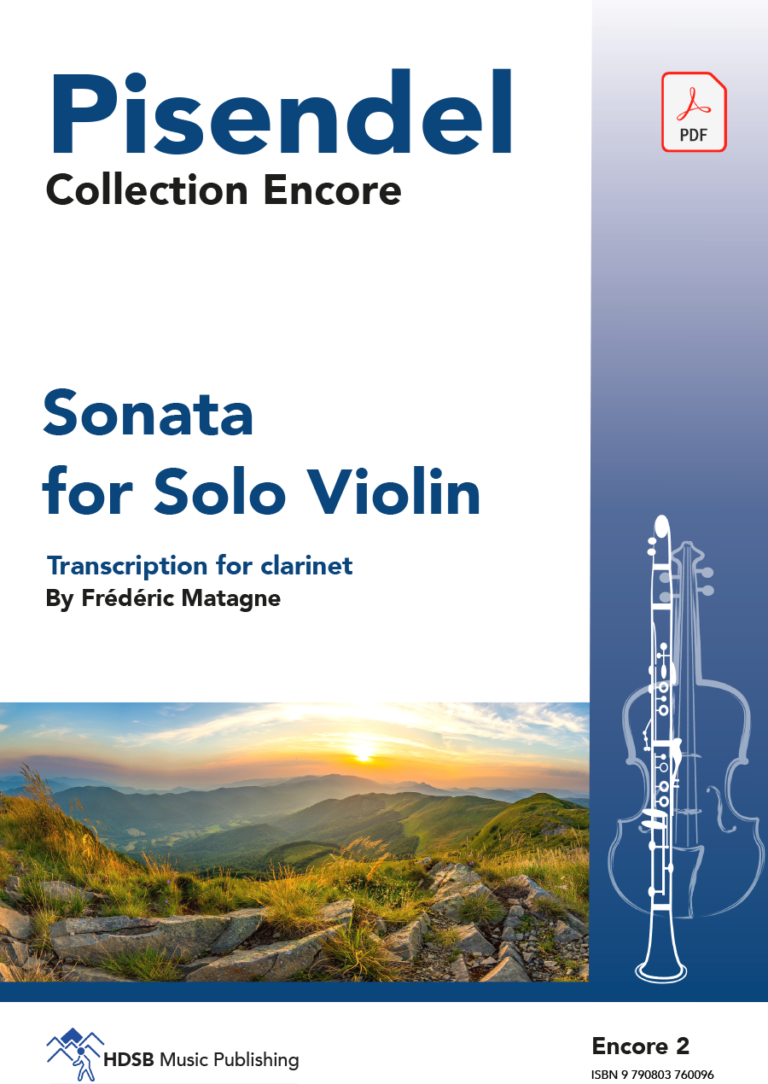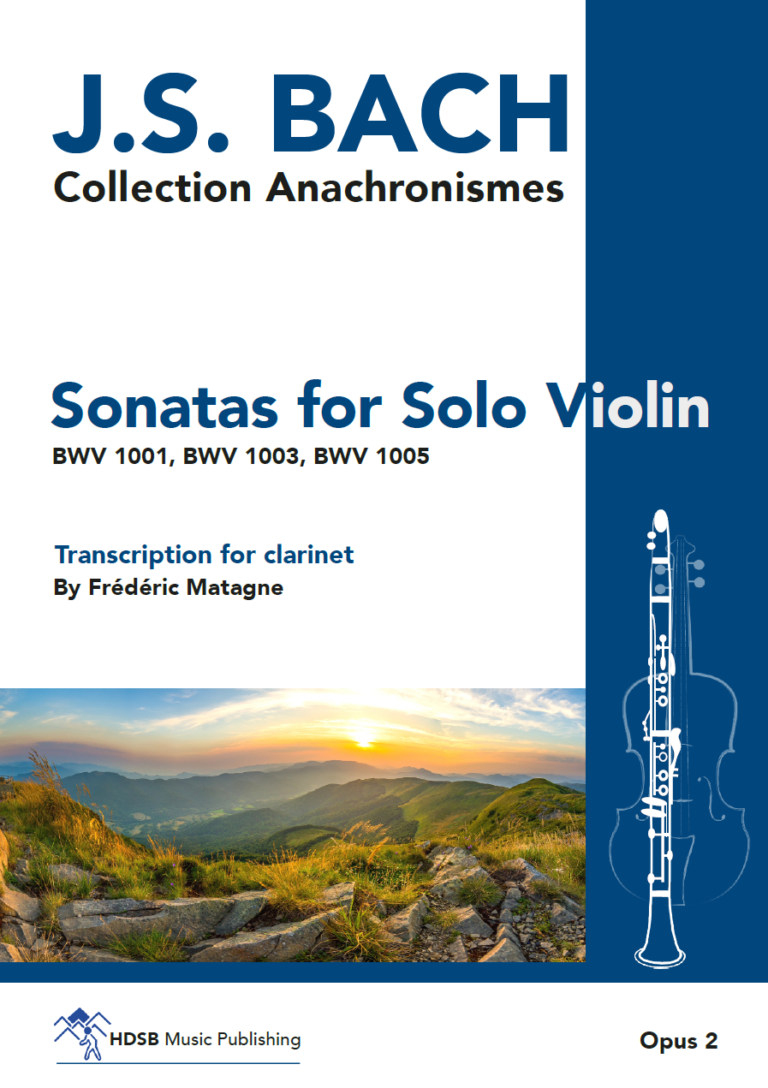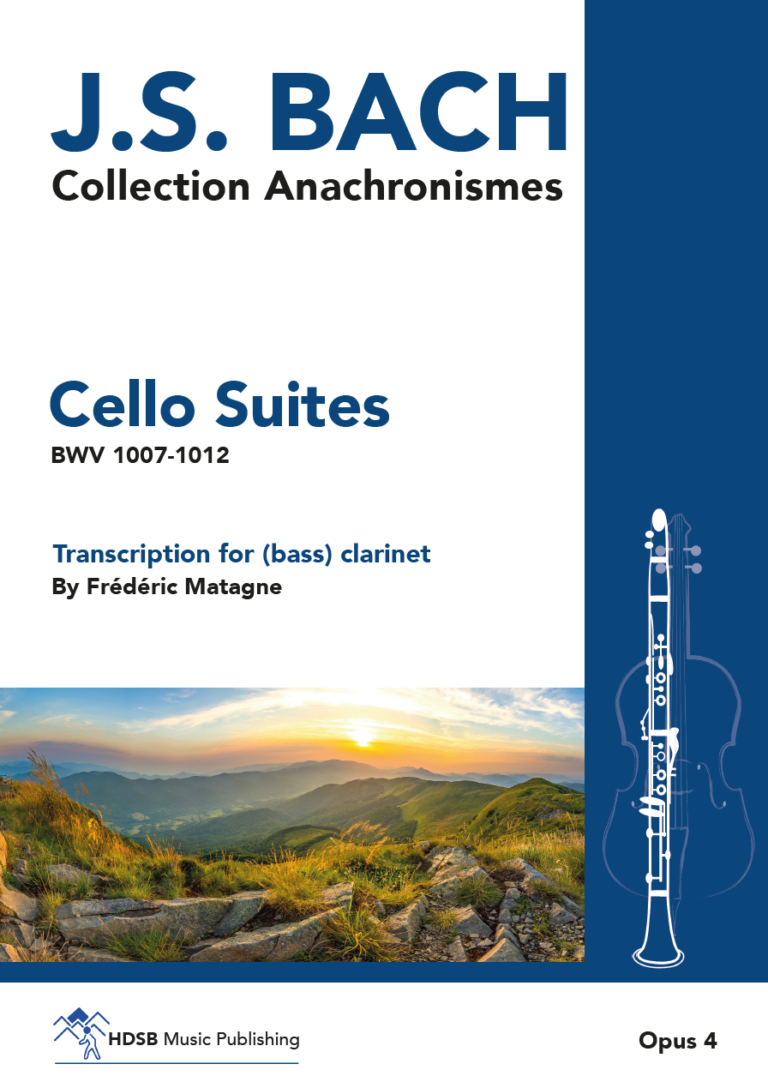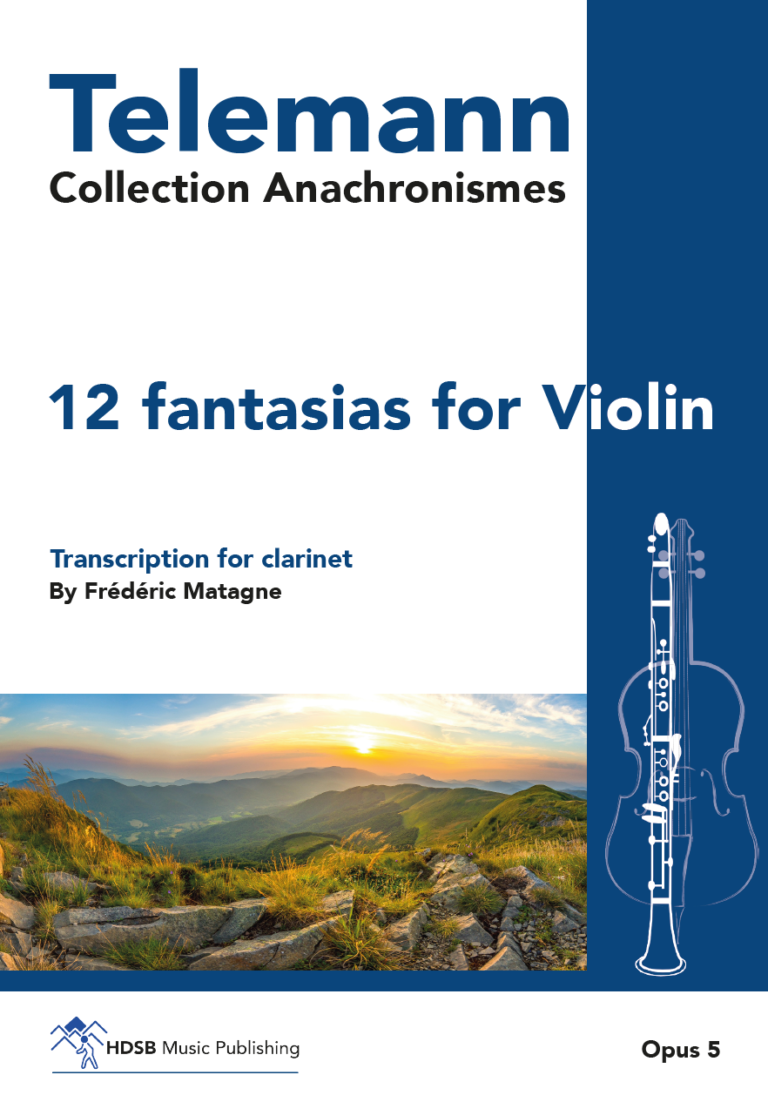Partitas for Solo Violin by J.S. Bach (transcribed for Bb and A clarinet)
J.S. Bach
Partitas for Solo Violin, including the famous ‘Bach chaconne’
(transcribed for Bb and A clarinet)
Opus 1
Released date: 2021
ISBN 9 790803 760003
€ 24.90
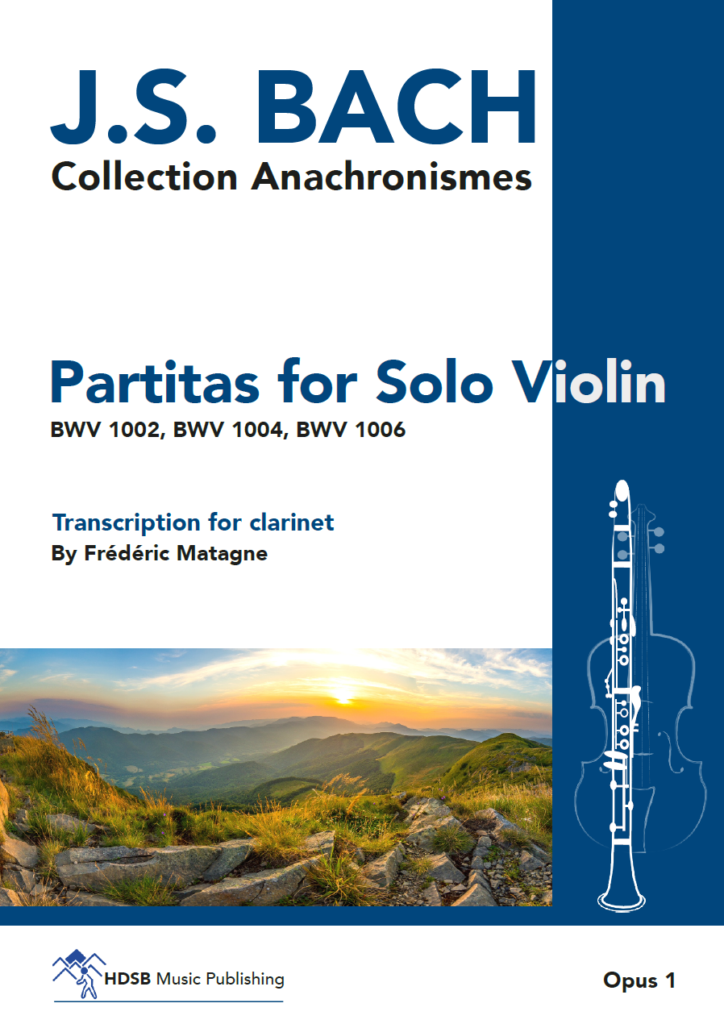
Description
This transcription was based on the original manuscript “Sei Solo a violino Senza Basso accompagnato”, more commonly known as the partitas and sonatas for solo violin, my source being the version copied by Anna Magdalena Bach. The dynamics and articulations follow the manuscript as closely as possible. I have added none of my own so as to leave the performer free to interpret this rich music. The articulations marked in the manuscript guide the violinist in her bowing choices, but it will be up to you to follow them or modify them as you see fit. The double-stoppings and chords (played as arpeggios by the violinist), are given here as appoggiaturas or arpeggios. I have deliberately not systematically retranscribed all the notes, to avoid overloading the performance. For example, you can explore ways of bringing the second note out by the way you weight the second note of the appoggiatura in the phrase.
I realise that for most clarinettists, playing from a score with no tempi, dynamics, articulations and breathing marked will be a little confusing. But that is precisely what I believe is so rich about this version closely following the original. You can explore this fabulous work, refine your technique (certain passages are particularly difficult) and develop your own interpretation. I encourage you to listen to virtuoso violin performances of these fantastic piece where you will find inspiration and ideas. I hope you will enjoy playing them as much as I do !
The word partita is derived from the Italian partire, meaning to share. It took different forms at different periods. The Italian composers in the late 16th and 17h centuries used to refer to a piece in a suite, inspired by a dance form. The first known composition was by the lutenist Vincenzo Galilei, probably dating from 1564. The word partita came to mean a variation or a modification, like our modern variations, generally based on a traditional melody. In the 18th century, particularly in the Germanic countries, the idea of the variation gives way to the dance suite (usually an Allemande – preceded by a prelude, a symphonia or an overture –a Courante, a Sarabande and a Gigue, with sometimes a Bourrée or a Minuet before the Guigue), as in the case of Christoph Graupner. In J.S. Bach there is a contrast between the partita, close in conception to the sonata da camera, comprising a suite of dances, and the sonata, closer to the sonata da chiesa. The partitas and sonatas for solo violin are a perfect example of this. Bachcan even be said to use the word partita as a synonym for virtuosity.
Frédéric Matagne

